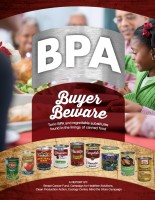As the food and beverage industry manages the continual impacts of the COVID-19 pandemic, safety remains a major topic of discussion. While many are aware of how handling practices can impact safety, less attention is sometimes paid to how packaging and materials can also play a significant role.
Good packaging practices and innovative technology—like antimicrobial surface coatings and plastic alternatives—are helping to make food and beverage products safer for consumers.
The Role of Packaging in Food Safety
The packaging process can have a significant impact on the safety of food products. Hygiene and other practices present significant cross-contamination risks. Packaging material choice can also affect safety.
While outbreaks of foodborne disease are somewhat rarer than they were 20 years ago, they remain a serious threat to consumers. In 2018, there were 1,052 foodborne outbreaks in the United States, an increase from the previous year and only a slight decrease from the 1,317 outbreaks in 1998, according to data from the CDC’s National Outbreak Reporting System (NORS) dashboard.
Food and beverage manufacturers are investigating innovative practices and materials to help make their products safer. In response to the pandemic, in December DS Smith announced a partnership with Touchguard to develop antimicrobial coatings for cardboard packaging. One coating created by the two companies has a “proven kill rate of 99.5% in under 15 minutes on bacteria types … and eliminates the risk of person-to-person transfer of infections, such as MRSA and E. coli.”
The cardboard is just one of several examples of antimicrobial materials that may help limit the spread of viruses that cause foodborne diseases, like E. coli.
Other businesses are aiming to tackle spoilage during shipping and storage. Innovative experiments could have a major impact on food waste. EU-funded project RefuCoat intends to “develop fully recyclable food packaging with enhanced gas barrier properties.” These materials will keep foods sealed from air and water while also offering recyclability.
New design strategies and technologies can also preserve the freshness of food once customers bring items home from the grocery store.
Portion packaging allows customers to open only the amount they need, leaving the rest sealed for future use. This helps customers avoid relying on home storage strategies, which may not be as effective as factory packaging in keeping food fresh and preventing spoilage.
These strategies also can support existing food safe packaging techniques. For example, portion control can be combined with tamper-evident packaging to make it more obvious when an item at the store has been accidentally opened. This will help ensure that customers only bring home and use food items that they know are safe and as fresh as possible.
Choice of mold release agents used in manufacturing processes that require packaging molds can also have a significant impact on food safety. These chemical compounds help resins and other materials detach from molds once cured, without being damaged. This helps to ensure that the finished product is as close to the mold shape as possible, and isn’t compromised when released from the mold. Certain kinds, like silicon, can produce cleaner finished products and extend the lifespan of packaging, which reduces waste and potentially improves package safety.
These strategies can help protect food from contamination during the packaging process and ensure it remains fresh and safe for as long as possible after leaving the facility.
As customers experiment with new brands and foods, businesses may find they are more willing to try items that use novel packaging strategies.
Safety Risk and Potential in Food Packaging Materials
Like food items themselves, all packaging materials are subject to approval by regulatory agencies, like the FDA or the European Food Safety Authority. However, some substances approved by the FDA can still have health impacts.
For example, bisphenol A (BPA), a chemical used to make certain industrial plastics and resins, is not banned by the FDA. However, its use has become controversial in the food packaging industry due to potential reported adverse health effects.
Some major manufacturing companies, like Campbell Soup Company, have fully transitioned away from the use of BPA. Others, like the Coca-Cola Co., continue to use the chemical in linings for aluminum cans.
One paper, The FoodPrint of Food Packaging, details how materials used may present health risks—and how alternatives already in use can help the industry create safer packaging.
For example, styrofoam use is declining due to the material’s environmental impact. However, polystyrene is still frequently used in rigid and foam food packaging. Plastic particles made from materials like polystyrene may harm health.
The report also lays out steps that food and beverage manufacturers can take to reduce the use of potentially unsafe chemicals in their packaging. Reusable containers can significantly reduce the amount of plastic waste generated by the food industry while also lowering the health risks packaging presents.
In an article for Packaging Digest, senior editor Rick Lingle briefly summarized the report’s findings and discussed them with Jershua Klemperer, director of FoodPrint. When asked about alternatives to plastics, Klemperer suggested using sustainable packaging materials—like metal, cardboard and fiber—but only if manufacturers can ensure they are not used in combination with unsustainable or potentially harmful materials like PFAS.
Strategies for Improving Food Safe Packaging
Food safety will remain a top priority for the food and beverage industry. Innovative strategies like antimicrobial coatings, portion packaging and plastic alternatives can help manufacturers make safer options. These strategies may become more common over the next few years as consumers become increasingly invested in food safety practices.








